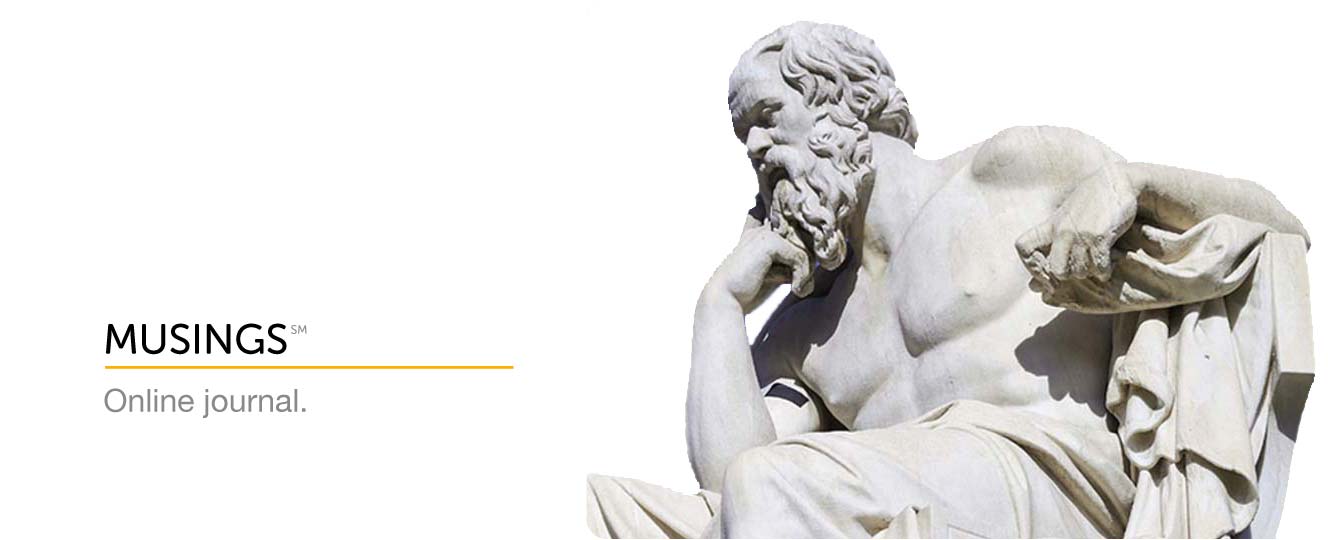The Power of Acceptance
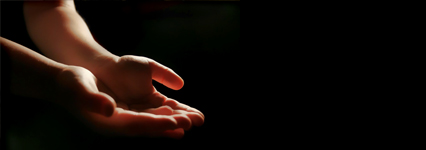
As a practice, even as a principle, acceptance is not part of our national psyche. In fact, it is far more likely to be regarded as a failing, as passivity and a lack of gumption than it is to be recognized as a tremendously creative and healing force. In our preoccupation with being the greatest and the best, with winning at all costs, with harnessing the power of technology to tame nature down to the level of the electron, with globalization and nation building, we have as a culture wandered into the dense jungles of willfulness and hubris, and in this, we have lost more than we ever could win even if every military adventure, every market expansion, every thoughtless exploitation of the earth achieved its goals. There is in all of this, of course, application at the level of personal life, which is where real change always begins.
Throughout the various programs developed by PhilosophyCenter, and certainly at the heart of our approach to philosophical coaching, is the principle that willfulness is a method that leads to failure and worse. Resistance, the use of force to “make things happen,” hubris and its variants—these lead to the same unwanted consequences. All we need do is look over the headlines any day of the week to see how individuals, corporations, and governments are paying the price. Indeed, there is not a single problem we’re facing, apart from those caused by natural disasters, that could not have been avoided through the skillful and steady application of willingness.
Willingness involves first of all refraining from exerting the will, from pushing against, from forcing an agenda, through a stepping back followed by a considered approach that accepts things as they are and goes from there. So much of the stress of modern life—stress that has been linked to physiological factors that lead eventually to disease—could be avoided through this practice of stopping, stepping back, and accepting things as they are for now, from which place we can begin to look at creative options.
Ultimately we have no control over outcomes. Events unfold according to the secret workings of chaotic factors that are far too subtle and indirect for us to recognize let alone manage or control. In the film, The Kingdom of Heaven, the character Sybilla asks her beloved, Balian of Ibelin, “What becomes of us?” Balian replies: “The world will decide. The world always decides.” This enlightened view allows us to go forward and meet the world undistracted, and to use our creative resources to change what we can change rather than to struggle against what we cannot.
Willingness is not complacency. It is not passivity. It is not resignation. It does not imply a willful refusal to act. On the contrary, willingness keeps us ready and steady, alert, responsive, and engaged in workable ways. It frees us to move with events, perhaps around them, to surprising and creative solutions rather than trying to move against or run over them. Willingness saves us from rushing headlong into error, even when those around us are telling us that such error is demanded by honor and glory and the like.
Willingness calls us to accept things as they are, but not only outer things, not only events and facts and conditions. Deep within each of us, the truth of who we are abides. It cannot be denied, and it will not be ignored, trivialized, dismissed, or distorted forever. Willingness, then, guides us to accept the inner reality—the “yes” and “no” of who we are—as well as the outer one, and in this willingness to accept things as they are, we discover something of the secret to happiness.
24 October, 2012
Kindergarten Wisdom
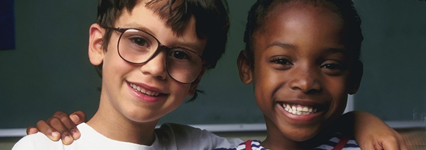
Back in the early 70s, I was at university and looking for a way to pay the bills. Fate opened the door to a teacher’s aide position, and I found myself working in a kindergarten to a wonderful woman, Julia Harper. My duties included things such as helping Mrs. Harper in the classroom, keeping an eye on our kids in the cafeteria during the half hour lunch break, and making sure that the kids got picked up after school. I had just begun a formal study in philosophy at the University of Florida, and the timing couldn’t have been better, since proverbial pearls of philosophical wisdom routinely fell from the mouths of the babes in my charge. One day, a little African American boy named Jamie tugged on my jeans. Looking down, I saw two, beautiful, brown eyes gazing up at me, and I was so charmed that all I could think of to say was, “Yes?” whereupon Jamie asked, “Are you God?” I told him I wasn’t, and thought I would have a little fun, so I fired back a question, asking him when the universe was created. Not missing a heat, he said, “1968.” I guess that was right, at least as far as his universe was concerned. On another occasion, a roundish girl named Teresa climbed to the top of one of berms bordering the playground, then rolled all the way to the bottom of the hill, landing right beside where I was standing. I thought I’d have some fun, so I asked her, “Teresa, as you were rolling down that hill, were you filled with existential dread and the sense that you might fall off into the void?” Teresa replied matter-of-factly, “No, I had my eyes closed.” There was another occasion, this time in the cafeteria. I was standing at a table where six kids were eating lunch and together. One of them was Jamie, the other, Hans, who was white. At one point, Hans noticed me standing by the table and pointing to Jamie, said to me, “We’re brothers.” I asked him, “Really?” He nodded. I thought I would push the issue a bit. “Are you really, really brothers.” Hans replied in the affirmative. “No, Hans,” I said, “I mean, do you have the same mother and father.” Hans regarded me with a look that could only be described as tolerant, and said, “Everyone has the same mother and the same father.” He had stopped me in my tracks. “They do?” I asked. “Yes,” said Hans, “Mother Nature—and George Washington.” One day after that, when the kids were waiting in the pickup circle after school, Hans came over to me and out the blue asked, “Do you know what doesn’t matter?” I was already entertained, and asked, “No, what doesn’t matter.” As though expressing infallible logic, Hans answered, “When a bee stings you on the shoe, that doesn’t matter.” Over forty years later, I’m still laughing at that.
I was a young man then. In less than a year, I would become a father. Philosophy was setting my inner life on fire, and the kids, spontaneous and immediate and undistracted by thinking provided me with a grounding in my heart, and I still feel extraordinarily privileged to have had that job for the year I did, and grateful to Mrs. Harper, wherever she is. I think that those of us whose hearts have been closed by too many years of suffering or struggle; who still believe that happiness lies just ahead in the next relationship or the next promotion or the time when we can pay off our debts; who feel, as the Fisher King Myth puts it so beautifully, “sick with experience,” should spend some time in a kindergarten as soon as possible. After that, most of the things we fret about, things to which we assign life-or-death importance, turn out to be a bee sting on the shoe.
10 September, 2012
The City Without Limits
The other evening, I watched a wonderful Spanish film, En La Ciudad Sin Limites (“The City Without Limits”), directed by Antonio Hernández, which tells the story of a Madrid family that convenes in a Paris hospital to be present for the end-stage treatment of a dying husband and father. Among many powerful details rendered by brilliant actors, masterful directing, and stunning cinematography was a passing reference to the “city without limits,” a phrase used to describe a city that has begun growing wildly in order to thwart the attempt of certain citizens to escape it by train. It is at once a reference to the cancer that has begun growing “without limits” in the brain of the dying father and a political metaphor of oppression that also belongs to the story—chilling in both respects, this idea that something dark, something evil, may begin spawning itself until one has no way out.
One thing that struck me about this reference was the fact that, despite its obvious power, it comes and goes in the film with no more attention to itself than a sigh. It is offered as an aside in a note penned by the dying man to an old friend, an obvious homage to a book written by the friend bearing the phrase as its title (the book also shows up briefly in the story), and I was touched by the poetic self-restraint of the writers, Enrique Brasó and director Antonio Hernández. Clearly, they trusted their audience to get the metaphor without repetition or explanation, and I thought that American screenwriters would do well to follow their example.
The other thing that struck me about the “city without limits” is how apt the metaphor can be for living in general. Sometimes, when we feel trapped in a situation, we may succumb to the sense that we’re on a train that simply can’t convey us to safety, that the situation has taken on a life of its own and is now growing unchecked. No matter what we do, we find we are still within the city of our suffering. The train is going as fast as it can, but the city has no limits.
When I talk to people who are feeling this way, I offer them something that I’ve learned—that every city has limits, and that there is always a way out. One may be on the wrong train—that is, a new and surprising track may be needed, but such tracks become available the moment we become willing to doubt and question the power of the problem. The track that cannot escape the city, it turns out, is the track of a one-track mind, a belief, a way of being that leads to a train of thought and action and fact that then seems to exist independently of the beholder. Our suffering becomes convincing, overtakes our creative nature, and seems to move with a life and authority of its own. Nevertheless, its roots lie within ourselves. The way out of the city of suffering, in the end, is as close as our willingness to question what we’ve taken for granted, a questioning that has within itself the power to point the way to someplace new.
11 August, 2012
Red Light, Green Light
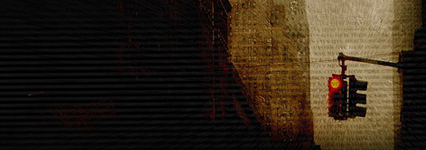
When I was a kid growing up in New York, we played a lot of games outside—on the sidewalk or in the vacant lot on the corner: stick ball, roller skating, stoop ball—such was the world of childhood long before the advent of video games, cable television, and the Internet. One favorite game was “Red Light, Green Light,” which involved sneaking up on someone designated as “it” while he had his back turned (having declared “Green light!”), then freezing in the seconds you had before he spun around shouting “Red light!” If he caught you moving, you were out of the game. But if he didn’t catch you, if you were skillful enough to anticipate the crucial moment, then he had to turn his back and say “Green light!” once more, whereupon the survivors resumed their stealthy advance. If you managed to tag him before he could catch you in the act, then you got to be “it,” and so the game went.
Somewhere between the autumn lit days of childhood and the responsibilities that come with being an adult, many of us seem to have acquired “red light” beliefs—also “green light” ones, by which I mean beliefs that stop us in our tracks or prompt us to dare next steps, respectively. The “red light” beliefs are often about love, about getting close to someone, or about possessing wealth, or “acceptable” degrees of outspokenness, and so on. Whatever the context, invariably these red-light beliefs keep us endlessly advancing at the same time that they hold us back, since as long as we give ourselves to such beliefs, it makes perfect sense not to press on but to retreat, disengage, be less than we would be if we adopted the relevant “green light” belief instead.
The catch is that giving up a “red light” belief requires being willing to face down whatever the belief is designed to protect us from—because it’s only at the point that our participation in the game of life is wholehearted and unconditional that it becomes a creative force. We got to experience something of this as kids—lurching ahead those last few feet always took a leap of faith—that you wouldn’t be caught at the last second and disqualified—and the thrill of that daring move came from suddenly caring more about the prize than the risk. That child’s game taught us courage and faith and boldness and a great deal more that can serve us now, in adult life. It comes down to a matter of where we put our attention.
Each of us has to answer certain fundamental questions about his or her life. Did I come here to hold back, to live halfway, to play it safe? What good thing might happen if I take a chance on what’s best in me? In the end, whether our experience is informed by “red lights” or “green” identifications is anything but childish. I often remind myself that “what we want wants something of us.” Really, it wants everything, our very being. The leap of faith—not in something “out there” but simply in all that is good and courageous and true and beautiful in oneself—determines the game, and in any case, the choice cannot be avoided. To win, one must be willing to lose. To have, we have to let go. Back then, playing games on the sidewalk, the urgency—to stay in the game, to advance to the next safe station, to keep from getting caught—all of it was part of the thrill. And for those who did get caught, there were other games, other days for which they would be that much more prepared, having practiced the best in them. Surely now, in our adult life, losing can be a chapter rather than the whole story. And if we practice what’s best in us and for whatever reason, things don’t go the way we want, does what we lose even compare to what we gain by being willing to play?
4 July, 2012
How Old Are You?
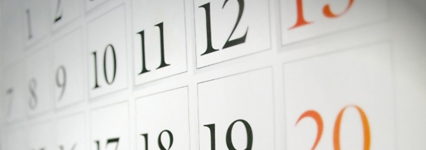
Recently I spoke with a friend who was concerned about getting older. The belief at the heart of the issue was what it often is—something to the effect that as we get older, we grow less and less attractive. Her comely years, in her view, were far behind her. Now, at 50, she was all but convinced that she was too old to be considered beautiful. And with each passing year, she felt not only less attractive but also less alive.
I can sympathize. When I turned 40, I felt old overnight—old, mind you, not just older. The idea that I was in any sense young suddenly was no longer credible. Looking back, I have to smile at that reaction, at how young 40 looks from where I stand now, and the unwitting readiness to be intimidated by time’s advancing markers. With each birthday, after all, are we not as old as we have ever been, at least to our recollecting? Furthermore, something in us, as though with a will of its own, scrawls slash marks on the wall, bundling them in tens as a man might do in prison to keep track of the passing weeks and months till his release—or execution. Does a boy turning 10 feel the power of this any less than a senior turning 90?
And yet, even while we “keep time” in this way, counting the passing years and watching the face in the glass aging before our eyes, something in us knows that we are as timeless as the seasons, perennial—the changeless and inscrutable “I am” that lives at the center of each of us in a place that time can’t touch. Is this sense of self not the same today as it was when we were children? This self knows only the living present, and how old is now? With what irony that nucleus of identity must regard our preoccupation with the calendar through which we allow time to tyrannize us, and steal from us the only time we ever really have—the moment before us, a mysterious wellspring that rises up between a recollected past and projected future that draw their seeming authority from our own, creative imagination.
From a philosophical perspective, it comes down, as it does so often, to a matter of belief. The number is what it is, of course, but whether we are old, whether we are attractive, whether aging adds to who we are or subtracts from it, this is up to us. Chopra tells us that our real age is an average of three numbers: our chronological age, our physiological age, and how old we feel. Seth/Roberts states that we are free at any moment on the time line to tap the power of our youth or the wisdom we believe we may have as elders. The point is not to believe that we are 40 if we are 60, but to realize that “old” and “young” are relative terms whose meaning continues to change as the years pass, and that there is a far greater fluidity here than we may have assumed. If we believe that beauty and attractiveness are no longer available to us, then our belief makes it so, and there is no doubt that the psychic structures that live in the depths of us have an effect on how we look, our vitality and passion for living, and how we come across to others. The question, “How old are you?” then, is not asking for the number of our last birthday, but for a moment of candid self-assessment, a look in the mirror not at our physical reflection but at the beliefs we have about who we are, and how much we have turned the authority of that determination over to the calendar. It seems reasonable to expect that those individuals who seem to grow in beauty as they age, who each year become more attractive until they are fairly luminous, are those who are open to beauty, who have not disqualified themselves from its estate. When we stop measuring beauty solely according to the standards of that particular variation that belongs uniquely to youth, when we stop allowing the looking glass to dictate our beliefs, we find we’re free to discover the beauty that ever accompanies those who believe in and look for beauty without consulting the mirror.
24 June, 2012

